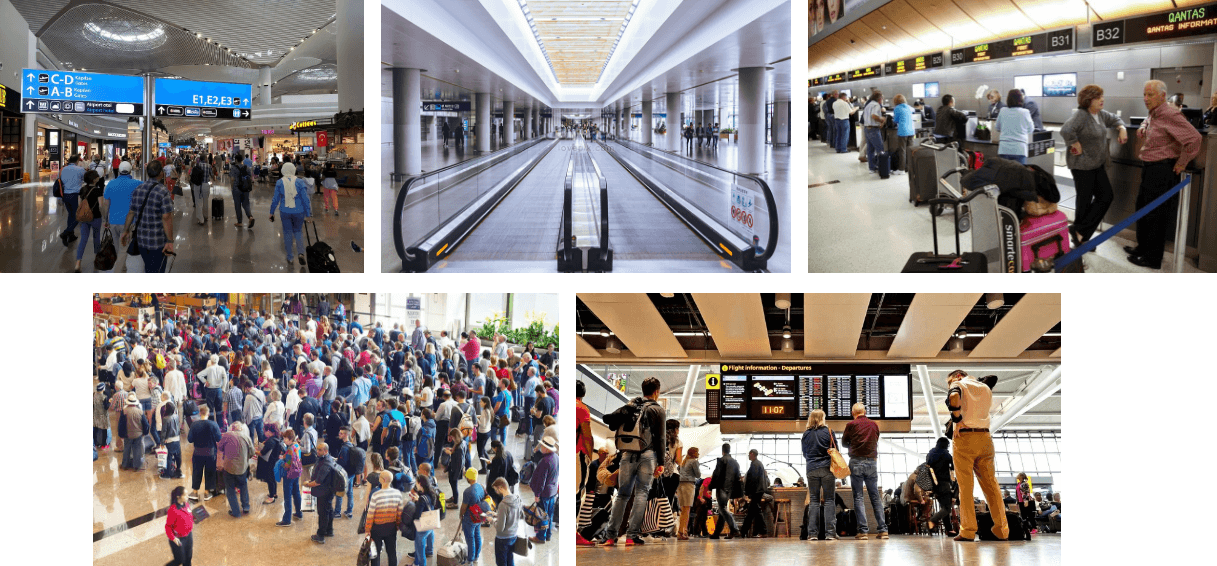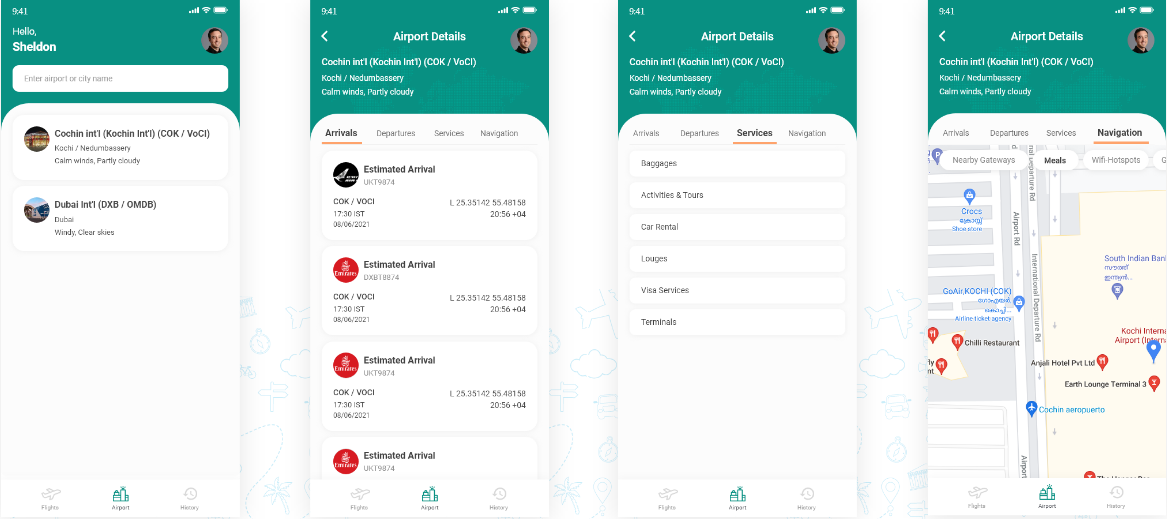Airports are vital national resources. They serve a key role in transportation of people and goods and in regional, national, and international commerce. They are where the nation’s aviation system connects with other modes of transportation and where federal responsibility for managing and regulating air traffic operations intersects with the role of state and local governments that own and operate most airports. The smart phone, in particular, offers great potential to help the passenger customize the airport experience while at the same time reducing the stress associated with airports and travel. Improving the Customer Experience new and Innovative Technologies presents an overview of how technology is being used to provide critical information, new services, operational efficiencies, and twoway communication tools to passengers while giving passengers unprecedented control over their experience at the airport.

Passenger trends have changed since the adoption of smart phone and mobile technologies. In 2014, the airline telecommunications service reported in its Passenger IT Trends Survey that mobile device adoption among passengers is at a high point, with 81% of passengers carrying a smart phone, 43% carrying a laptop, 43% carrying a tablet, and 18% carrying all three devices (SITA, June 2014). The 2015 SITA’s 360-degree report noted that globally, 97% of passengers bring a mobile device with them on trips. Technology has transformed the way passengers experience the airport terminal (SITA 2015). A wide variety of self-service technologies have been implemented in many U.S. airports, including self–bag tagging, self–check-in, and self–gate boarding. Due to different security protocols, some airports abroad are more advanced in implementing automated bag-drop stations, home-printed bag tags, and 100% self-service passenger terminals to take full advantage of passing control of the check-in process to customers
Passenger trends have changed since the adoption of smart phone and mobile technologies. In 2014, the airline telecommunications service reported in its Passenger IT Trends Survey that mobile device adoption among passengers is at a high point, with 81% of passengers carrying a smart phone, 43% carrying a laptop, 43% carrying a tablet, and 18% carrying all three devices (SITA, June 2014). The 2015 SITA’s 360-degree report noted that globally, 97% of passengers bring a mobile device with them on trips. Technology has transformed the way passengers experience the airport terminal (SITA 2015). A wide variety of self-service technologies have been implemented in many U.S. airports, including self–bag tagging, self–check-in, and self–gate boarding. Due to different security protocols, some airports abroad are more advanced in implementing automated bag-drop stations, home-printed bag tags, and 100% self-service passenger terminals to take full advantage of passing control of the check-in process to customers

Interviewing the Traveller about their travel habits and to check that the problem we were trying to solve is actually a problem for the user or not.
- What will be the first thing you will look up for, once you have reached the airport?
- How was your last experience while you were at the airport?
- Are you an early bird/ on time / a late comer at the airport?
- Can you tell me about how was your check-in process?
- How about the usage of mobile apps for check-in?
- How did you find your check-in counter at the airport?
- Ever stood in long check-in queues?
- Once checked in did you know your way to your boarding gate?
- Have you ever missed a flight just by some couple of minutes?
- How was it to read and understand the signs on the airport?
- Have you ever used the lounge at the airport?
- Can you tell me about your shopping and eating experience at the airport?
- Once you reached your destination, how did you find your way to the luggage belt?
- Tell me about your experience about leaving the airport?
Based on the photos journal and user interview
- Tavellers aren’t kept informed of flight issues and delays
- Outdated baggage handling system to track the baggage inside the airport.
- Specific areas such as check-in, security check, and passport control at airports are prone to be crowded or downright congested during peak times that make travellers tried, confused and frustruated
- During layovers, cant find a perfect place to sleep or read books or even shopping is not easy access.
- Although wheelchair services need to be booked in advance, oftentimes people either don’t show up for their appointment.
- Lack of customer care service, especially when it comes to times of disruption.
Studying and analyzing competitors can be much more enriching than it seems.These companies are possible competitors directly or indirectly. I chose them because the results in surveys and interviews pointed to them. In this project I decided to make a competitive and comparative benchmarking to the companies named below:



- Ticketing and Baggage drop
- Security Inspection
- Navigation towards quick shopping like meals, drink etc.
- Should know the updates on flight timing and gate information.
- If have more time (layover time) explore the airport and facilities
- Once arriving, pick up baggage that are checked.




